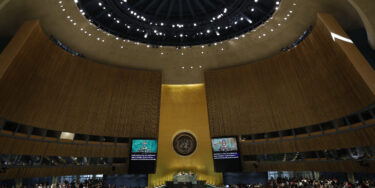A Year Later, Still No Justice for Farkhunda
01.04.16
On March 19, 2015, Farkhunda Malikzada was murdered by a mob of angry Afghan men because a local religious cleric had falsely accused her of burning the Quran. The crowd threw stones at her, drove over her body, and set her on fire. On the day she died, Farkhunda had no protection from the state or those around her. The struggle to achieve justice for her has become a sign of the struggle to protect the rights of women throughout Afghanistan.
Like many Afghan activists, I have spent the last year attending protests and writing about and working with local organizations to advocate for justice for Farkhunda. When we began speaking out along with thousands of Afghansaround the world, we hoped that Farkhunda’s murderers would be brought to justice and that her case would set a precedent for the legal system to protect the safety and rights of Afghan women. But a year later, the lack of justice has had significant implications for women’s rights in Afghanistan, where the majority of perpetrators of violence against women never face legal repercussions. The government’s failure to maintain justice has emboldened criminals and left Afghan women more vulnerable to violence.
A year ago, following public demonstrations, the government moved fast to arrest those involved. President Ashraf Ghani promised a full investigation of the case and the Ministry of Interior announced that 50 suspects had been arrested. A trial of 49 of the arrested followed. No explanation was offered as to the fate of the other suspect. This swift action gave people hope. For the first time, it seemed the law was finally protecting Afghan women. This was especially important because videos showed police officers assisting the angry murderers or standing by idly as they tortured Farkhunda. Holding those police officers accountable would be a powerful sign that women can count on the state for their safety and security.
These hopes quickly disappeared during the initial trial when the public saw that many of the killers were met with benevolence by the court. Only 12 of the 49 men charged were convicted. While it was expected that at least the cleric who instigated the violence against Farkhunda would receive the death penalty,he did not. Of the 19 police officers arrested for participating in the violence or for not intervening to protect Farkhunda, eight of them were not penalized. The remaining 11 were punished with restrictions on their ability to travel while on the job. Even more infuriating to the public was that some of the men who were filmed participating in the violent attack, and later boasted about their involvement on social media, did not even face arrest. The Ministry of Interior argued that some of those involved could not be found and the degree of their involvement could not be proven.



